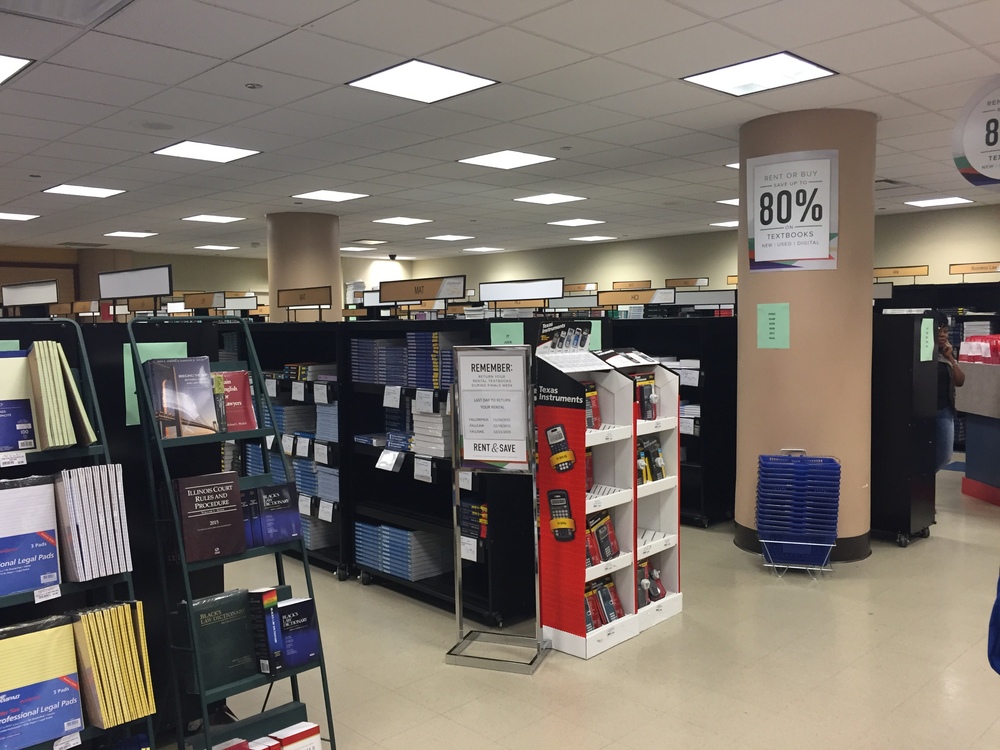DeBooks iOS App
Overview
Roles: Project Lead, Researcher, Designer
Project: Think of a concept and design a solution using a user-centered design process that will benefit DePaul University students or staff. Present the design solution via high-fidelity Axure prototypes and prepare a final proposal.
Concept: A community where DePaul students can easily buy and sell their used textbooks with other DePaul students. While this community focuses primarily on textbook exchanges between students, the campus bookstore and other online sources should be made available for buying and selling.
User Interviews and Observations
Although user research was not a requirement for this project, my team decided to launch very brief and informal research sessions to help us understand our user's needs. Our research methods included interviews and observations.
After interviewing about eight students, my team observed another five students rent and purchase textbooks in the lower level of the DePaul Center Bookstore.
Want to see how thorough I can get with user research? Visit this page to see the user research I did on BuzzFeed for another class.
Contextual Analysis
…With Affinity Diagramming
After gathering all of our notes from our user interviews and bookstore observations, my team was ready to use affinity diagramming to help us turn our notes into some insights, which would help us uncover specific user needs.
Our first step to this method was to collectively write down key notes from our research sessions and put them on a whiteboard.
Creating Clusters
We began to group similar stickies together under general categories.
Uncovering Insights
Next, we made our general groups more granular. During this process, my team found that there were actually two main users: students and bookstore staff.
By involving the bookstore staff, there would be some level of trust and security that isn't there when using the app without the staff. With this change, users will be able to foster a positive relationship with our app and will be more likely to use it.
My team turned our insights into requirements by writing user stories: As a student, I want to compare textbook prices, so that I can get the best deals on my books.
Establishing Design Principles
Defining Success
Based on our requirements, we listed some design principles that would help our app succeed. “A successful solution will…”
Brainstorming and Ideation
As a group, we quickly conceptualized some possible solutions that would satisfy the design principles we listed. Working together, and fast, helped us build off of each other's wild ideas.
Once we got some concepts out there, the next step was to think of what these concepts might look like.
Communicating the Idea
To help explain our concepts, we used interface sketches, storyboards, and scenarios. Using these artifacts, my team was able to spend time thinking through how the interaction might be designed.
Lo-Fi Phase
Based on the requirements we documented and the concepts we explored, my team was ready to build our first paper prototype. The paper prototype focused mostly on the tasks that users were most likely to complete while navigating through our app.
We quickly worked out our sitemap on the whiteboard and sketched out some screens together. Doing this helped us create a cohesive direction and shared understanding for starting our paper prototype.
Create, Test… and Repeat
Testing our paper prototype with other students helped us identify usability flaws in our design.
After testing, we were ready to refine our paper prototype based on user feedback and test again before moving on to our Hi-Fi digital prototype.
Prototyping in Axure
Using Axure, my group created a hi-fi prototype for the DeBooks app, which creates an easier way for DePaul students to buy and sell textbooks with each other. View the DeBooks app prototype
Since we uncovered a second user group during our research, we also created a very quick and dirty prototype for the bookstore staff called "DeBookstore" (for presentation purposes) which helps bookstore staff members track incoming and outgoing orders. View the DeBookstore prototype
Looking Back
Time was our biggest constraint for this project. Since it was a ten week course, we didn’t have a lot of time to spend on each phase (research, prototyping, etc) as we would have liked.
Also, this was my first time using Axure. With more time, I could have learned more of the advanced features of Axure and used it to its fullest capacity to create a more robust prototype.










